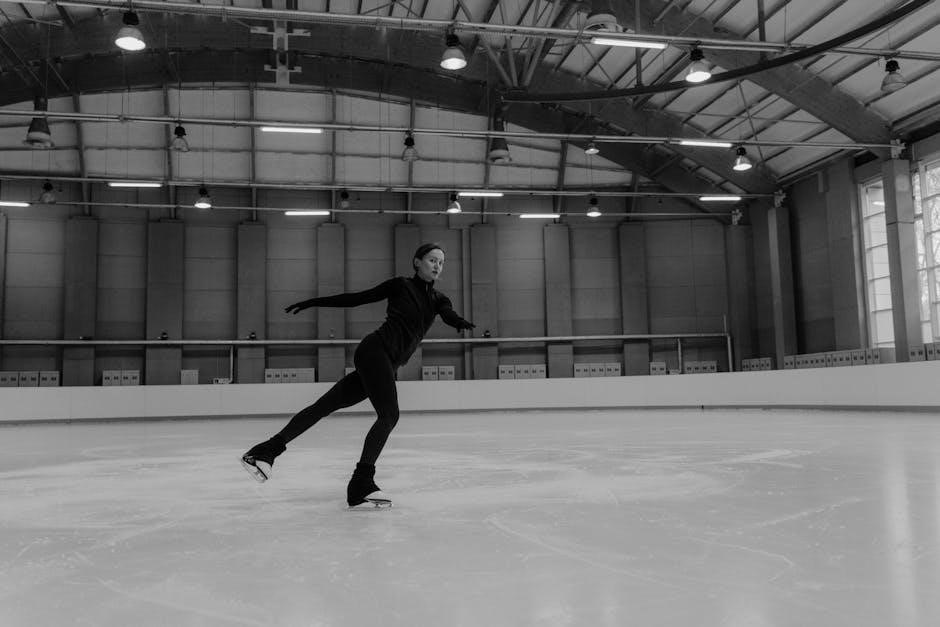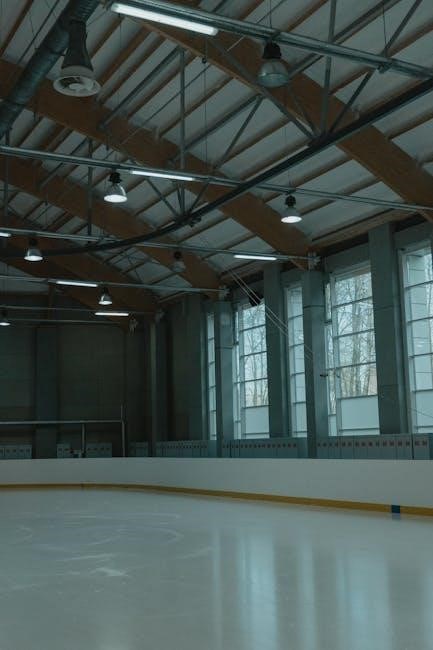Diastasis Recti: Understanding and Addressing Abdominal Separation
Diastasis recti is a common condition‚ particularly postpartum‚ involving the separation of the rectus abdominis muscles․ This can lead to core weakness‚ back pain‚ and a protruding abdomen․ Targeted exercises‚ focusing on strengthening the transversus abdominis‚ can aid in recovery and improve abdominal function․
What is Diastasis Recti?
Diastasis recti abdominis (DRA) refers to the separation of the rectus abdominis muscles‚ commonly known as the “six-pack” muscles‚ along the midline of the abdomen․ This separation occurs at the linea alba‚ a band of connective tissue that joins the two sides of the rectus abdominis․ DRA is particularly prevalent during and after pregnancy‚ as the growing uterus stretches the abdominal muscles and the hormonal changes soften the connective tissue‚ making it more susceptible to separation․
While DRA is common in postpartum women‚ it can also occur in men and even infants․ In adults‚ it may result from repetitive straining of the abdominal muscles‚ such as during heavy lifting or chronic coughing․ In infants‚ it is often due to incomplete development of the abdominal wall․
The severity of DRA is measured by the width of the gap between the rectus abdominis muscles․ A gap of more than 2-2․5 centimeters (approximately one inch) is generally considered significant․ DRA can lead to a variety of symptoms‚ including lower back pain‚ pelvic pain‚ poor posture‚ a weakened core‚ and a protruding abdomen․ It’s important to address DRA with appropriate exercises that focus on strengthening the deep core muscles‚ particularly the transversus abdominis‚ to improve stability and function․
Causes of Diastasis Recti
The primary cause of diastasis recti is the stretching and weakening of the abdominal muscles‚ particularly the rectus abdominis‚ and the connective tissue (linea alba) that joins them․ While pregnancy is the most common contributor‚ other factors can also lead to this condition․ During pregnancy‚ hormonal changes‚ specifically the increase in relaxin‚ soften the connective tissues in the body‚ including the linea alba‚ to accommodate the growing fetus․
As the uterus expands‚ it puts pressure on the abdominal wall‚ causing the rectus abdominis muscles to stretch and separate․ Multiple pregnancies‚ carrying a large baby‚ or having excessive amniotic fluid can further increase the risk of developing diastasis recti․
However‚ pregnancy isn’t the only cause․ In men and non-pregnant women‚ diastasis recti can result from activities that repeatedly strain the abdominal muscles‚ such as heavy lifting with improper form‚ chronic coughing‚ or excessive abdominal exercises like crunches and sit-ups․ Infants can also be born with diastasis recti due to incomplete development of the abdominal wall muscles․ Understanding these causes is crucial for prevention and choosing appropriate exercises for recovery․

Exercises for Diastasis Recti Repair
Repairing diastasis recti involves specific exercises focusing on core strengthening and proper muscle engagement․ These exercises aim to reduce abdominal separation and restore core stability․ It is very important to avoid certain exercises that can worsen the condition․
Safe Exercises to Initiate Postpartum Recovery
Postpartum recovery requires gentle and safe exercises to address diastasis recti effectively․ Initial exercises should focus on activating the transverse abdominis‚ the deepest abdominal muscle‚ which acts as a natural corset․ Proper breathing techniques are essential during these exercises to avoid increasing intra-abdominal pressure․
Begin with diaphragmatic breathing‚ inhaling deeply to expand the rib cage and exhaling fully to engage the core․ Combine this with gentle pelvic floor exercises‚ like Kegels‚ to enhance core stability․ Abdominal compressions‚ performed lying down‚ can also help activate the transverse abdominis․ As you progress‚ incorporate heel slides and gentle pelvic tilts‚ maintaining core engagement throughout each movement․
Avoid exercises that cause bulging or coning of the abdomen‚ as these can exacerbate diastasis recti․ These safe exercises are designed to promote healing‚ rebuild core strength‚ and support overall postpartum recovery‚ paving the way for more advanced workouts later on․ Remember to consult your healthcare provider before starting any exercise program․
Exercises to Strengthen Transversus Abdominis
Strengthening the transversus abdominis is crucial for diastasis recti repair․ This deep core muscle acts like a corset‚ supporting the spine and internal organs․ Effective exercises include abdominal hollowing‚ where you gently draw your navel towards your spine while maintaining normal breathing․
Another beneficial exercise is the pelvic tilt‚ performed lying on your back with knees bent․ Gently flatten your lower back against the floor by engaging your core․ As you progress‚ incorporate heel slides‚ extending one leg at a time while maintaining core engagement․ The bird dog exercise‚ performed on hands and knees‚ is also effective․ Extend one arm and the opposite leg simultaneously‚ keeping your back straight and core engaged․
During all exercises‚ focus on controlled movements and proper breathing․ Avoid exercises that cause bulging or straining of the abdominal muscles․ Consistency is key‚ so aim for regular practice to gradually strengthen the transversus abdominis and support abdominal wall healing․ Remember to consult a physical therapist or healthcare professional for personalized guidance․

Exercises to Avoid with Diastasis Recti
Certain exercises can exacerbate diastasis recti‚ hindering healing and potentially worsening the abdominal separation․ Traditional crunches and sit-ups place excessive strain on the rectus abdominis‚ causing the abdominal muscles to bulge outwards․ These should be avoided during the initial stages of recovery․
Planks‚ while generally considered a core exercise‚ can also be problematic if not performed correctly․ The pressure on the abdominal wall can cause doming‚ indicating increased separation․ Similarly‚ exercises involving twisting motions‚ such as Russian twists or oblique crunches‚ should be avoided as they can further strain the linea alba․
Heavy lifting without proper core engagement can also put excessive pressure on the abdominal muscles․ Avoid any exercises that cause bulging or coning of the abdomen․ Focus instead on exercises that promote deep core activation and stability․ Listen to your body and stop if you experience any pain or discomfort․ Consulting with a physical therapist is essential to ensure you are performing exercises safely and effectively․

Diastasis Recti Workout Plans and Programs
Structured workout plans are vital for diastasis recti recovery‚ offering a progressive approach․ Programs‚ often available in PDF format‚ guide users through safe exercises‚ promoting core strength and abdominal muscle healing‚ post pregnancy‚ and throughout any other circumstances․
28-Day Diastasis Recti Workout Plan (PDF)
A 28-day diastasis recti workout plan‚ often available as a PDF‚ offers a structured approach to healing abdominal separation․ These plans typically include daily guided workout videos․ The primary focus is rebuilding full-body strength‚ particularly targeting the core and abdominal muscles‚ especially beneficial after pregnancy․ Such programs emphasize safe and effective exercises to gradually close the abdominal gap․
The workout routines incorporated in these plans often include exercises such as vacuums‚ marches‚ bridges‚ and side planks‚ with intensity increasing gradually․ These exercises focus on strengthening the transversus abdominis‚ the innermost layer of abdominal muscle‚ which acts as a natural corset․ By consistently engaging this muscle‚ individuals can help return the separated muscles to their original position․
These plans provide a comprehensive approach to postpartum recovery‚ addressing not only diastasis recti but also overall strength and well-being․ By following a structured program‚ individuals can regain core stability‚ reduce back pain‚ and improve their overall posture․
The availability of workout videos also ensures the exercises are performed with correct form․
21-Day Diastasis Recti Workout Challenge (PDF)
A 21-day Diastasis Recti Workout Challenge‚ often provided as a PDF‚ offers a shorter‚ more intense program aimed at addressing abdominal separation․ This challenge typically outlines a core exercise program with exercises that progressively increase in intensity over the 21 days․
The exercises included in such a challenge often consist of vacuums‚ marches‚ bridges‚ and side planks‚ similar to the 28-day plans‚ but with a potentially faster progression․ These exercises focus on engaging and strengthening the transversus abdominis and other core muscles‚ promoting healing of the diastasis recti․
The 21-day format can be appealing to those seeking quicker results or who prefer a more condensed workout schedule․ However‚ it’s important to listen to your body and modify exercises as needed‚ especially if you are postpartum․ Gradual progression is key to avoiding injury and ensuring effective healing․
These challenges may also incorporate breathing techniques and core engagement strategies to maximize the effectiveness of each exercise․ If you want to keep a copy of these exercises‚ I made it easy for you to go back to them as often as you need and want․

Breathing and Core Engagement
Proper breathing and core engagement are crucial for diastasis recti recovery․ Coordinating breath with core exercises helps manage pressure‚ preventing strain on the abdominal muscles and pelvic floor‚ facilitating effective healing and strengthening․
Importance of Breathing Techniques During Exercise
Effective breathing techniques are paramount when performing exercises for diastasis recti․ Coordinating your breath with movements can significantly impact the healing process․ Proper breathing ensures that pressure is managed effectively within the abdominal cavity‚ preventing outward bulging and strain on the linea alba‚ the connective tissue between the rectus abdominis muscles․
During exertion‚ exhaling helps engage the transversus abdominis‚ the deepest abdominal muscle‚ which acts like a natural corset․ This engagement supports the spine and reduces pressure on the diastasis․ Conversely‚ inhaling during the relaxation phase allows for optimal oxygen intake‚ promoting muscle recovery and reducing the risk of injury․ Improper breathing‚ such as holding your breath‚ can increase intra-abdominal pressure‚ exacerbating the separation and hindering healing․
Focus on deep‚ diaphragmatic breathing‚ where the abdomen expands upon inhalation and contracts upon exhalation․ This type of breathing promotes core stability and minimizes stress on the abdominal muscles․ Integrating mindful breathing into your exercise routine is essential for achieving optimal results and preventing further separation․
